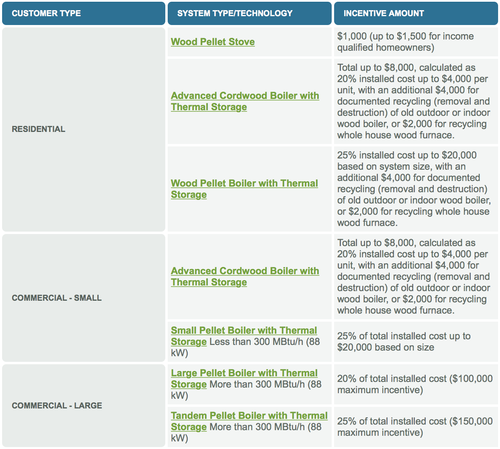Graphics
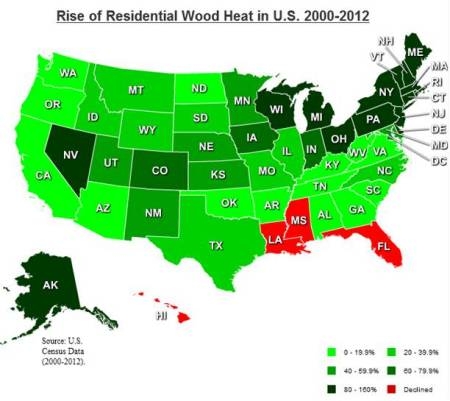
© Greenwood Clean Energy, Inc.
This map demonstrates the increasing popularity of Woodfuel in US households. New York is shaded the darkest shade of green, which represents an 80-100% increase in residental woodfuel implementation. Aside from the four states shaded red, representing a decling in the use of residental woodfuel, the rest of the country is moving in the right direction to implementing woodfuel practices.

© New York State Energy Research and Development Authority
This chart demonstrates the increasing populatirty of woodfuel, specifically in institutional buildings, in the Adirondacks. As you can see, woodfuel is widely used as a heating source for many of these facilities. Its popularity both in the park and in the United States indicates that it is an up and coming technology as an alternative energy source.
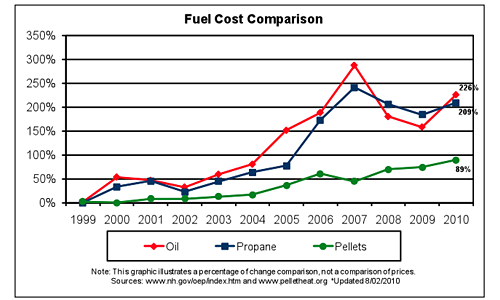
© www.nih.gov/oep/index.htm and www.pelletheat.org
This graph illustrates a change comparison the costs of heatin with oil, propane, and wood pellets between 1999 and 2010. Oil and propane have dramatically increased by 226% and 209%, respectively, while wood pellets have only increased by 89%. As oil and gas reserves are depleted, this change in price is only expected to increase. However, if the Adirondacks acknowledge its potential for the implementation of woodfuel, the change in price may in fact decrease in the future.
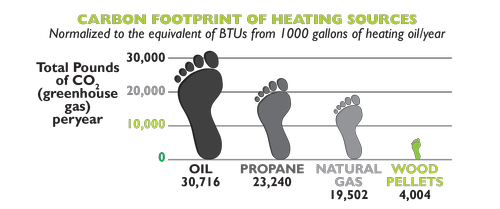
© Bear Mountain Forests Products
Compared to Oil, propane, and natural gas, wood pellets as a heating source have a much more significantly lower carbon footprint. Oil produces approximately nine times as many pounds of CO2 each year. As the effects of climate change become more evident, the shift towards renewable and cleaner energy sources, such as woodfuel remains crucial.
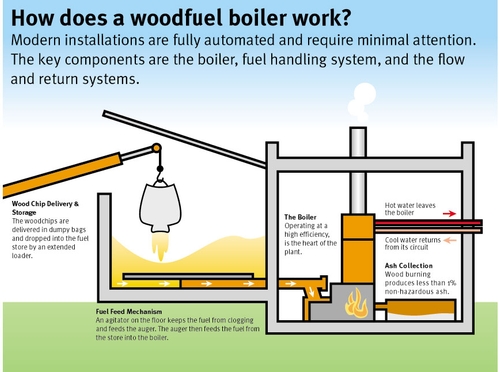
© Webwork Mull: Accommodation Tobermory
This diagram illustrates how a small scale commercial boiler works. From the feeding of woodchips into the system to the heating of water, this diagram simplifies the crucial steps of how the boiler converts wood into heat.
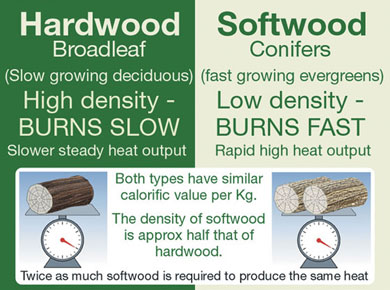
© Certainly Wood

© www.thoughtyoumayask.com
These two images compare hardwood and softwood, and state their individual burning characteristics. Generally, hardwoods are more dense and burn more slowly, which makes for hotter and more efficient burning.
